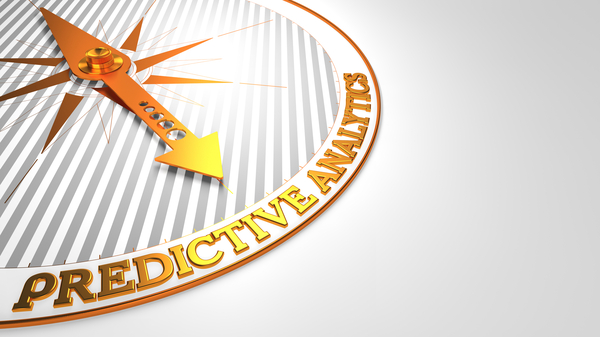The late philosopher Eric Hoffer and the late business guru Peter Drucker shared a common belief about the difficulty of predicting the future. Hoffer wrote, “The only way to predict the future is to have power to shape the future.” Drucker wrote, “The best way to predict the future is to create it.” Few organizations, however, have the power to create the future; nevertheless, they still must do their best to anticipate it. That’s where forecasting and predictive analytics come into play. Predictive analytics involve techniques like data mining and machine learning to predict future trends from past and current data. You might be asking yourself: What is the difference between traditional forecasting and predictive analytics? Don’t both activities rely on available data to estimate what a potential future state is going to be? The two activities are related and trying to define differences between the two can be difficult. Organizers at Predictive Analytics World try to explain the difference this way: “Predictive analytics [goes] beyond standard forecasting by producing a predictive score for each customer or other organizational element. In contrast, forecasting provides overall aggregate estimates, such as the total number of purchases next quarter. For example, forecasting might estimate the total number of ice cream cones to be purchased in a certain region, while predictive analytics tells you which individual customers are likely to buy an ice cream cone.”[1] In other words, granularity is the primary difference between forecasting and predictive analytics.
Knowing why predictions are being made is important
Jeff Fisher, an analyst with Emcien, believes predictive analytics has a “dirty little secret.” He explains, “Predictive analytics examines data and tells you what it is likely to happen in the future. It promises to give you the power to ‘predict the future of your business’ and to ‘know what will happen next.’ And current technology is capable of making thousands, even millions, of predictions each second. Sounds pretty darn impressive. But the dirty secret is that much of the automated predictive analytics technology on offer simply isn’t very useful. Why? Knowing what’s going to happen next is nice, but if you don’t know why, you won’t know what to do about it, and it will be of little value.”[2] To avoid this black box situation, my company, Enterra Solutions®, leverages the Representational Learning Machine™ (RLM) created by Massive Dynamics™. The RLM can help determine what type of analysis is best-suited for the data involved in a high-dimensional environment (i.e., it ensures the right model is being used). The RLM also operates in a glass box fashion so clients know exactly why and how results are being made. Patrick Hall, the principal scientist at bnh.ai, and Navdeep Gill, the lead data scientist at H2O.ai, assert, “Understanding and trusting models and their results is a hallmark of good science. Analysts, engineers, physicians, researchers, scientists, and humans in general have the need to understand and trust models and modeling results that affect our work and our lives.”[3]
Hall and Gill assert, “The tools now exist to build accurate and sophisticated modeling systems based on heterogeneous data and machine learning algorithms and to enable human understanding and trust in these complex systems. In short, you can now have your accuracy and interpretability cake … and eat it too.” Obtain the right data, identify a specific problem, and apply the right analytics model and your company can obtain the results for which it is looking. It’s not hype, but it’s also not as easy as it sounds.
Implementing predictive analytics
Daniel Bachar (@d_bachar), a Product Marketing Director for Advanced Analytics for Logility, notes, “When companies feed their customer and process data into predictive models, they better understand future behavior and make decisions based on hard data, rather than gut feelings.”[4] He adds, “Predictive analytics is a subset of business intelligence that focuses specifically on learning past behaviors to predict future behaviors. … By adding distinct and measurable data from across your business into a predictive model, you can better understand your customers’ future behavior.” Predictive analytics are particularly useful in supply chain operations. Analysts from Research Optimus note, “Predictive analytics is being applied toward all facets of business operations and processes to help anticipate events, avoid risks, and create solutions. By forecasting future supply chain and logistical events, companies can gain a competitive advantage and prevent monetary loss due to inaccurate stocking, and mismanagement of goods, deliveries, and time.”[5]
They add, “Predictive analysis is used to make forecasts by reading algorithms based on both current and historical data. Organizations can modify how and where they use resources to better prepare for future events. It creates a framework for connecting the dots between trends, patterns, and associations in data to help businesses respond proactively to future developments. Predictive analytics uses a mixture of analytics methodologies, combined with automated tools and technologies, to find patterns within data, and goes one step further to anticipate the likelihood of specific future events.” Predictive analytics are not a crystal ball and they are not perfect; however, they are becoming an essential tool in many organizations. In business, uncertainty can affect profits. Business consultant Greg Petro observes, “We are living in uncertain times. Looming risks like wars, environmental and labor regulations, natural disasters and transportation challenges are placing many retail supply chains and retail profit centers at the mercy of the unforeseen.”[6]
If that doesn’t make you yearn to know more about the future, it should. Petro goes on to predict companies failing to grasp the future risk ending up in history’s dustbin. He writes, “Real-time is no longer fast enough. Modern [organizations] that build predictive analytics and automation into the supply chain can benefit from being able to predict future needs and facilitate necessary changes to their operations, eliminating time-wasting steps and staying ahead of the modern era while guarding against catastrophe before it happens.” Research Optimus analysts list a number of ways organizations can use predictive insights in the areas of supply chain and logistics. They include:
- Transportation Management Systems: Supply chains depend on fixed lead time and uncertainty for factors such as ocean shipping, can be addressed by predicting future disruptions.
- Third Party Logistics: Predictive analytics can create more value by developing partnerships with technology providers to apply Big Data to their services.
- Industrial Procurement: Retailers and distributors can prepare months in advance to help their suppliers plan to inventory and shipments based on customer demand and buying behavior.
- Customer Visibility: Organizations can obtain market insights about customers, suppliers, and trading partners, as well as seasonal buying patterns and consumer forecasts to make quicker more intelligent decisions.
- Product and Content Placement: Organizations can better prepare for short-term behavioral changes that affect supply chain and logistics such as news, weather, shortages, and manufacturing promotions. By utilizing predictive analytic models to detect unexpected conditions, they can better adjust site merchandising in response to specific time-sensitive
- Improved Personalization for B2B: Predictive analytic models can be used to ensure that the correct seasonal products are delivered to customers based on geographical region. A model can detect changes that may necessitate a modification in merchandising per geographic location.
- Predict supply and demand: Predictive analytics ensures that there are less waste and on-time deliveries during pinnacle demand times.
- Predictive Maintenance: This is extensively used in supply chain logistics in a technology-focused way, particularly in operations that focus on picking and packing, and across fleets of transport ships and trucks.
Concluding thoughts
Bachar writes, “Think of predictive analytics as making ever more educated guesses based on the data you have. This means that your predictions will fit into statistical models, and that just because all the data points to a particular outcome, it may not happen that way in reality. By necessity, your models are built with a finite number of variables at play, where an infinite number of variables can compound within actual human behavior. No model will accurately predict all behaviors, but the more data you use the better your models will be at predicting.” Because cognitive computing systems can deal with many more variables than older systems, they can improve prediction accuracy as more variables come into play. Even though organizations may not have the power to create the future, with cutting edge predictive analytics solutions they have a powerful tool that helps them prepare for the future.
Footnotes
[1] Staff, “Predictive Analytics World FAQ,“ Predictive Analytics World.
[2] Jeff Fisher, “The Dirty Secret About Predictive Analytics,” Datafloq, 19 April 2017.
[3] Patrick Hall and Navdeep Gill, “Do You Trust and Understand Your Predictive Models?” insideBIGDATA, 3 February 2020.
[4] Daniel Bachar, “How To Implement Predictive Analytics Into Your Company,” Logility Blog, 18 May 2020.
[5] Staff, “How Predictive Analytics Is Benefitting Supply Chain and Logistics Industry,” Research Optimus Blog, 19 December 2017.
[6] Greg Petro, “Economic Uncertainty Drives Next Phase In Supply Chain — Predictive Analytics,” Forbes, 4 November 2018.





